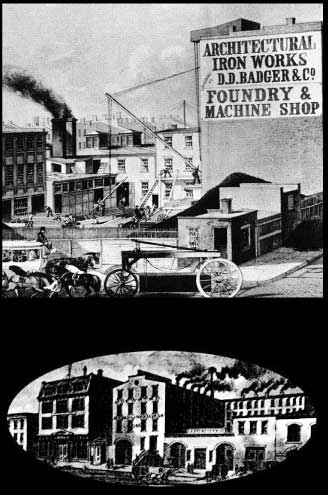

Nineteenth Century Development of Rose Hill and Kips
Bay - cont
water factories in the United States was established at First Avenue and 26th
Street in the 1830s.
As the East 20s and 30s developed, the area along the East River became used largely for industry, with piers extending into the river at the end of each cross street. For example, between 23rd and 24th Streets were a stocking factory, glass works, and the Stover Machine Company. Between 24th and 25th Streets were five slaughterhouses and a vinegar factory. On the next block, between 25th and 26th Streets, were the Franklin Forge, a gin distillery, a lime and brick yard, and a soap factory. A block west, across First Avenue, residential tenements were mixed in with the industry. Between 25th and 26th Streets, First and Second Avenues, residential buildings shared the block with lumber and coal yards and three slaughterhouses. Between 26th and 27th Streets were the Lawrence Moulding Mill, a soda water factory, two dying establishments, a distillery, two slaughter houses, a chain and buckle factory, and several residential buildings. Needless to say, this must not have been a pleasant area in which to live, and these were low-rent tenements housing the working class and recent immigrants.
As one moved west and north, the amount of industry decreased and the neighborhood slowly changed. Many blocks between Second and Third Avenues consisted largely of tenements. Above 30th Street, blocks included row houses for more middle class residents. Further west, Lexington Avenue was lined with modest rowhouses, serving as a transitional street to the upper class enclave around Madison Square.